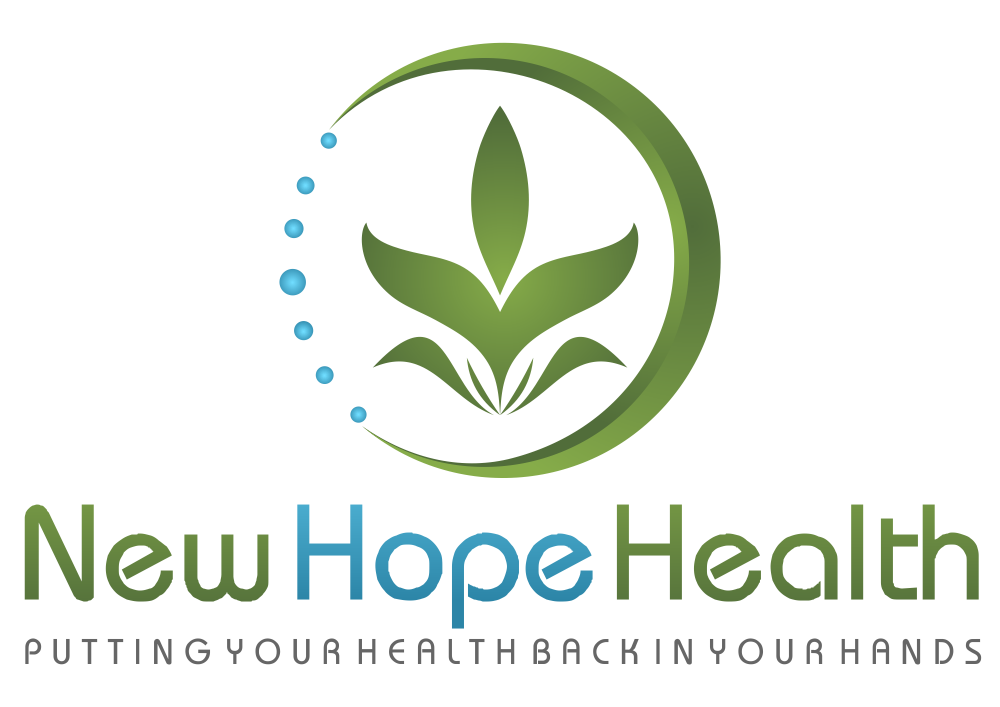
In the past few years, I’ve been seeing liver conditions in younger and younger populations. This has happened on the coat tails of a dramatic increase in the consumption of sugar, alcohol, meat, dairy and a generally highly-processed diet. One of the challenges with conditions such as non-alcoholic fatty liver disease is that most people don’t notice symptoms right away AND, sadly, many doctors don’t do anything until the disease state is solidified (rather than looking for early indicators such as the simple serum liver enzyme tests).
That said, we can’t blame the medical doctor that they weren’t offered nutrition classes… This is really a societal problem that starts from childhood… But the good news— there’s always hope! Your body was created to health itself if it has what it needs (and stops getting that which hurts it).
The liver is a large organ that sits in the right upper quadrant of the peritoneal cavity. It comprises about 2% of an adult’s bodyweight.1 The liver works with nearly every system in the body, so it plays a role in many conditions. (It helps with digestion, hormone regulation, detoxification and so much more.)
What does a healthy liver actually do?
Before we can talk about liver diseases, let’s review what the liver actually does under normal circumstances. Your liver is an incredible organ with over 500 jobs! A few of the most important include:
- Filtering blood- The liver filters blood coming from the portal vein rich in nutrients, medications, toxins and other substances. It acts on various substances by processing, detoxifying, converting and then puts the substances either back into the blood to be transported or into the bowel to be eliminated. This is how, for example, alcohol is removed from the blood.2
- Making bile- The liver produces and secretes bile. Bile is important for the emulsification and break down of lipids.2
- Metabolism/digestion- The liver has a key role in the digestion of fats, carbohydrates and proteins. Bile is a key component for the breakdown of fats into easier-to-assimilate fatty acids. For carbohydrates, the liver helps regulate blood sugar and also stores glucose that isn’t used immediately. The liver also uses amino acids to produce energy or make carbohydrates or fat.2
- Storage- The liver works as a storage facility for vitamins, minerals and glycogen.
What is end-stage liver disease?
End-stage liver disease, commonly referred to as cirrhosis, occurs when enough of the liver is damaged beyond repair leading to liver failure. The liver becomes scarred, which reduces its function to a level that will barely sustain life (and eventually as it progresses will not sustain life). For those in this stage of liver failure, a liver transplant is the only way to survive. Typically, these people are extremely sick and hopeful that they will get a liver transplant before it’s too late.
Who gets end-stage liver disease?
There are several known causes of ESLD such as: Hepatitis, alcoholic liver disease, and nonalcoholic steatohepatitis (NASH) which is non-alcoholic fatty and enflamed liver disease.3
What is non-alcoholic fatty liver disease (NAFLD)?
NAFLD impacts between 30-40% of the adult population.4 It occurs when there is excessive fat stored in the liver. So much so that it is unable to work properly to adequately carry out its necessary metabolic functions. There are 2 types of NAFLD: simple fatty liver and nonalcoholic steatohepatitis (NASH).
What is the cause of NAFLD?
For the purpose of this post, I won’t go into great detail as I have another post on NAFLD… if you’d like more information on that, check it out here.
Briefly, although the cause is officially unknown, there are a couple of factors that those with NAFLD have in common: obesity and type 2 diabetes.
Of a group of patients with severe obesity who were going to undergo bariatric surgery, 90% of them had NAFLD.5 Obesity has been consistently linked with NAFLD and therefore lifestyle modifications that reduce bodyweight are helpful in managing this condition.6
Type 2 diabetes is most often a diet-induced disease characterized by glucose building up in your blood due to your cells not being able to properly respond to insulin. This condition impacts the entire body but specifically the pancreas. Although studies are not conclusive, it’s suspected that insulin resistance is the main reason for the correlation with NAFLD.7
It is significant to note, however, that obesity and type 2 diabetes are mainly lifestyle induced conditions and are often seen together. Therefore, the correlation with NAFLD is really more of a triad.
What are the symptoms of end-stage liver disease (ESLD)?
Due to the liver’s wide range of jobs in the body, cirrhosis impacts so many other organs and systems. The kidneys, lungs, gastrointestinal tract, blood, skin and endocrine are all majorly effected.3 This deeply systemic condition yields many complications.
Those with ESLD commonly have:
- Jaundice- The yellowing of the skin due to high levels of bilirubin.
- Ascites- The excessive buildup of fluid in the abdomen.
- Hepatic encephalopathy- Disease or damage to the brain (memory issues, twitching, disorientation, etc.)
- Varices- Portal hypertension causes blood vessels in the esophagus and stomach to become inflamed. This can become very serious if they rupture or bleed.
- Malnutrition- Poor liver function decreases the ability of the body to digest and absorb nutrients from foods that are eaten.
- Multiple other symptoms such as fatigue, weight loss, muscle cramps and more.
Nutritional recommendations before NAFLD becomes ESLD:
It is important for those with NAFLD to prevent the progression of the disease by paying close attention to their nutrition. There are a few specific changes that will prove helpful.
- Reduce body weight (for those who are obese or overweight). In obese populations, a 7-10% reduction in bodyweight has been shown to slow the progression and even reverse the fatty liver condition that contributes to NAFLD.8 For more information on healthy weight loss, we have lots of resources… See this blog or check out The Quantum Weight loss Blueprint.
- Eliminate meat and dairy intake. There is a strong association between animal protein and NAFLD. Reducing or, better yet, eliminating meat intake will prove helpful in managing NAFLD.9
- Increase plant foods! This will provide fiber, vitamins, minerals and a host of anti-inflammatory factors that promote your best health and is associated with a dramatically decreased risk of NAFLD.10
Some of my favorite supplements for the liver are:
- Deltanol– Supplementing with vitamin E has shown to reduce oxidative stress, fibrosis of the liver as well as liver inflammation, all of which are commonly seen in those with NAFLD.11
- Max B– Your liver needs lots of B vitamins (especially B3 and B12)12. Due to poor diet, high stress and lots of toxins in the environment, b vitamins get used up quickly so supplementing can prove helpful for many conditions.
- Turmeric– Curcumin is found in turmeric and helpful for liver disease and also as a preventative.13 We have a Fermented Turmeric Powder, Turmeric Caps and even in a liquid form (Liver-ND). These are all different formulas but are nonetheless great for the liver.
- Gallbladder-ND– Your liver and gallbladder work closely together. Anything you do to help (or hurt) one will help (or hurt) the other. This product is rich in B6 and also contains turmeric amongst a powerful mixture of liver and gallbladder supportive herbs.
- Castor oil packs (external)- Castor oil packing your liver can be a great way to improve blood flow and nutrients to the liver and support proper detoxification.
***Remember that these are to SUPPLEMENT your healthy diet and lifestyle, not take the place of it.
Is there hope? (Prevention vs. Cure)
On the front end, for those who do not have liver issues or for those who perhaps have minor liver issues, prevention is simple, effective and the ideal plan for long-term liver function. A plant-based diet reduces your risk of NAFLD by over 20%.10 If you already have a liver condition, reach out to my clinic for more specific help. Your body is still wanting to heal you!
Resource List:
1. Kalra A, Tuma F. Physiology, Liver.; 2018.
2. Institute for Quality and Efficiency in Health Care. How Does the Liver Works? Inst Qual Effic Heal Care/InformedHealth.org – NCBI Bookshelf. 2016.
3. Savio J, Bashar S. Hepatic Cirrhosis. StatPearls. 2019.
4. Spengler EK, Loomba R. Recommendations for Diagnosis, Referral for Liver Biopsy, and Treatment of Nonalcoholic Fatty Liver Disease and Nonalcoholic Steatohepatitis. Mayo Clin Proc. 2015. doi:10.1016/j.mayocp.2015.06.013
5. Chalasani N, Younossi Z, Lavine JE, et al. The diagnosis and management of non-alcoholic fatty liver disease: Practice Guideline by the American Association for the Study of Liver Diseases, American College of Gastroenterology, and the American Gastroenterological Association. Hepatology. 2012. doi:10.1002/hep.25762
6. Sarwar R, Pierce N, Koppe S. Obesity and nonalcoholic fatty liver disease: Current perspectives. Diabetes, Metab Syndr Obes Targets Ther. 2018. doi:10.2147/DMSO.S146339
7. Bhatt HB, Smith RJ. Fatty liver disease in diabetes mellitus. Hepatobiliary Surg Nutr. 2015. doi:10.3978/j.issn.2304-3881.2015.01.03
8. Vilar-Gomez E, Martinez-Perez Y, Calzadilla-Bertot L, et al. Weight loss through lifestyle modification significantly reduces features of nonalcoholic steatohepatitis. Gastroenterology. 2015. doi:10.1053/j.gastro.2015.04.005
9. Alferink LJM, Kiefte-De Jong JC, Erler NS, et al. Association of dietary macronutrient composition and non-alcoholic fatty liver disease in an ageing population: The Rotterdam Study. Gut. 2019. doi:10.1136/gutjnl-2017-315940
10. Mazidi M, Kengne AP. Higher adherence to plant-based diets are associated with lower likelihood of fatty liver. Clin Nutr. 2019. doi:10.1016/j.clnu.2018.08.010
11. Dongiovanni P, Lanti C, Riso P, Valenti L. Nutritional therapy for nonalcoholic fatty liver disease. J Nutr Biochem. 2016. doi:10.1016/j.jnutbio.2015.08.024
12. Li J, Cordero P, Nguyen V, Oben JA. The role of vitamins in the pathogenesis of non-alcoholic fatty liver disease. Integr Med Insights. 2016. doi:10.4137/IMI.S31451
13. Farzaei MH, Zobeiri M, Parvizi F, et al. Curcumin in liver diseases: A systematic review of the cellular mechanisms of oxidative stress and clinical perspective. Nutrients. 2018. doi:10.3390/nu10070855
Nothing said or implied in this post is intended to treat, cure, diagnose or prevent any disease. It does not take the place of a qualified health care practitioner and is intended for educational purposes only.

Dr. LeAnn Fritz, PhD
Dr. LeAnn is a practitioner, coach, speaker, consultant, and the founder of New Hope Health. She is also the author of The Quantum Weight Loss Blueprint, and Get Healthy Now. She is laser-focused on practical, evidence-based practices to empower her clients to get real results that last. She sets the bar when it comes to radiant health that will change every area of your life forevermore.
Recent Posts
Parasites- Living Inside Your Body, Without Paying Rent!
Parasites…I know…the thought of them living inside your body feels like something from a horror
Holistic Detox: A Naturopathic Doctor’s Guide to Cleansing Your Body for Optimal Health
Detox is a powerful way to reset your body and enhance your health. As a
Watermelon Slurpy…Upgraded!
It’s summer and it’s HOT! You’re looking for a refreshing cold drink that will give
Curious about achieving your highest level of health?
Schedule your consultation with Dr. LeAnn today, and get your health back in your hands.


